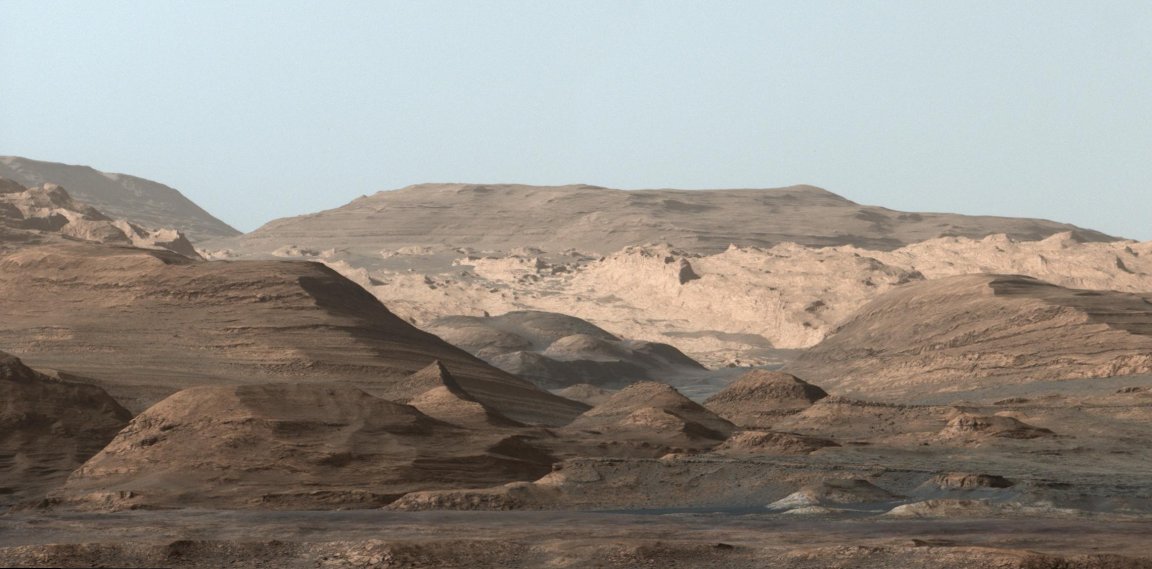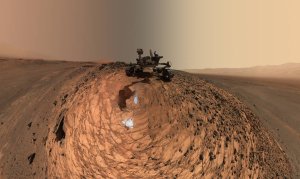

This image looks like it could have been taken out on the sandy slopes of Texas, or one of a hundred different locations on Earth; however, this stunning photo actually comes from another world.
As the latest image reveals, the Mars rover Curiosity is a huge leap forward from previous rover technology. This amazing machine was created by NASA and was launched on the 26th of November 2011. It traveled some 560 million kilometers (350 million miles) in order to reach its destination. Once it arrived, it completed some extremely complicated preprogrammed maneuvers in order to successfully land on Mars and, ultimately, bring you images like the stunning vista shown above.

In the image to the right, you get a view of Curiosity itself. This low-angle self-portrait of NASA’s rover shows the vehicle above the “Buckskin” rock target, where the mission collected its seventh drilled sample (it currently just finished its eight drill). The site where the selfie was captured is in the “Marias Pass” area of lower Mount Sharp. The scene combines dozens of images taken by Curiosity’s Mars Hand Lens Imager (MAHLI)
But of course, we didn’t go to Mars just to take fancy images. This rover is an extremely expensive piece of technology, costing NASA some 2.5 billion dollars. This is the highest amount of money NASA has ever spent on a rover, and it is meant to help us determine whether Mars ever really had the conditions necessary for supporting life as we know it.
To that end, it had been drilling a series of holes in the Martian soil in an attempt to better understand both the composition of the planet and what conditions may have previously been like.

Since its arrival, it has found evidence of liquid water on Mars, discovered organic molecules, and suffered a bit of wear and tear.
But its missions is nowhere near complete.
Curiosity has been wandering about Mount Sharp since September 2014, drilling as it travels on. In the top image, we see where the rover is heading over the coming months. “The only thing more stunning than these images is the thought that Curiosity will be driving through those lower hills one day,” Curiosity project scientist Ashwin Vasavada, of NASA’s Jet Propulsion Laboratory in Pasadena, California, said in a statement. “We couldn’t help but send a postcard back to all those following her journey.”
Of course, some may be wondering why the Red Planet had blue skies.
Well, to begin with, it doesn’t always have such a clear sight. In the below image, you see what dust sometimes does to Mars. The planet gets its name (the Red Planet) from the dust that covers the surface, and it is this dust that gives the sky a red coloring during the day; however, things change depending on the conditions found on the planet.
For example, you can see the contrast between the Martian sky during the day and during sunset in the image below.

In the end, the sky on Mars is like the sky on Earth – it varies depending on a number of factors, like the time of day, the particulate content in the air, the position of the rover in respect to the Sun, how NASA renders the photo (Curiosity does not see the landscape the same as the human eye would, as it has a different spectral range), and so on.
Mark Lemmon, a Curiosity team member from Texas A&M University, previously discussed what often makes the sky look blue: “The colors come from the fact that the very fine dust is the right size so that blue light penetrates the atmosphere slightly more efficiently. When the blue light scatters off the dust, it stays closer to the direction of the sun than light of other colors does. The rest of the sky is yellow to orange, as yellow and red light scatter all over the sky instead of being absorbed or staying close to the Sun.”
FQTQ is managed by two people, Jaime and Jolene. We want to make science fun and engaging. We’re doing that. With your help, we can do even more.
Below you can support us, get to know us, and access extra content: